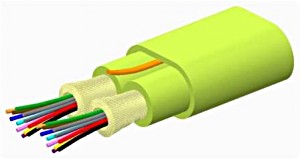In an international standards ballot that closed on October 5th, 2016, OM5 was chosen by an overwhelming majority of nations as the official designation for cabling containing WideBand Multimode Fiber in the upcoming 3rd edition of the International Organization for Standardization and the International Electrotechnical Commission standards, or ISO/IEC 11801. This is an important milestone in standards progress and for market acceptance of this new and revolutionary fiber cabling performance category. It extends the benefits of multimode fiber within connected and efficient buildings and within data centers worldwide.

To welcome the selection of the new designation, here are five reasons to select OM5 fiber:
- OM5 fiber specifications are already published by the Telecommunications Industry Association as TIA-492AAAE, and are in late-stage ballot within the IEC to be published as IEC 60793-2-10 edition 6.
- OM5 and TIA-492AAAE specifications will be recognized in the upcoming ISO/IEC 11801 Edition 3 and the American National Standards Institute cabling standard ANSI/TIA-568.3-D.
- OM5 cabling supports all legacy applications as least as well as OM4 and is fully compatible and intermateable with OM3 and OM4 cabling.
- OM5 is designed to support at least four low-cost wavelengths in the 850-950 nm range, enabling optimal support of emerging Shortwave Wavelength Division Multiplexing (SWDM) applications that reduce parallel fiber count by at least a factor of four to allow continued use of just two fibers (rather than eight) for transmitting 40 Gb/s and 100 Gb/s and reduced fiber counts for higher speeds.
- OM5 is available globally from CommScope in field-terminated and pre-terminated versions for installations in multiple enterprise environments, from campuses to buildings to data centers.
Multimode fiber has come a long way since its inception in the early 1980s. As with most transmission technologies, it was first deployed in long-haul networks. An early breakthrough project consisted of a blazing 45 Mb/s multimode fiber backbone running from Boston to Washington D.C. Fast forward 30-plus years (while 45 Mb/s is a now typical Internet connection speed to the home), multimode fiber continues to deliver the lowest total system cost for systems operating at 100 Gb/s and beyond in buildings and data centers.


.png?width=58&height=58&name=X_logo_2023_(white).png)
